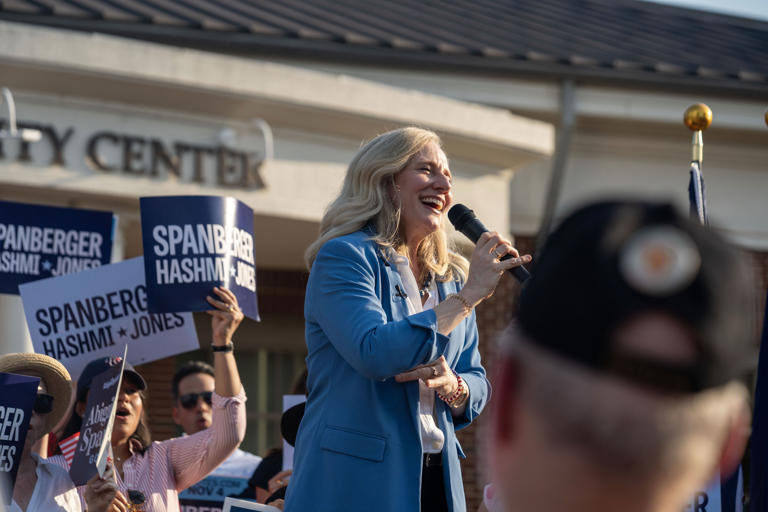As the leaves turn and November 2025 approaches, the political stage is set for a series of high-stakes elections that could reshape America’s future. While President Donald Trump won’t be on the ballot, his shadow looms large over the contests, from governor’s races to a pivotal ballot measure in California. The Democratic Party, still reeling from recent setbacks, is scrambling to rebuild and counter Trump’s influence. With voters’ sentiments about Trump’s agenda and the Democrats’ response at the forefront, here are five burning questions that could define the outcome of this fall’s elections.
Can Democrats Flip Virginia’s Governor’s Race?

The Virginia governor’s race is a marquee matchup, pitting Republican incumbent Glenn Youngkin against a Democratic challenger eager to reclaim the state. Virginia, a battleground with a history of swinging between parties, is a critical test of Democratic resilience. Youngkin, bolstered by Trump’s endorsement, has pushed a conservative agenda that resonates with red-state voters but risks alienating moderates. Democrats are banking on voter fatigue with Trump’s influence to flip the seat, emphasizing issues like education and reproductive rights. Polls show a tight race, and the outcome could signal whether Democrats can regain momentum in a state they once dominated. A loss here would deepen their rebuilding challenges, while a win could spark hope for 2026 midterms.
Will New Jersey Stay Blue?
In New Jersey, another closely watched governor’s race unfolds as Democratic incumbent Phil Murphy faces a Republican challenger riding Trump’s coattails. The Garden State has leaned reliably blue, but GOP gains in recent years have tightened the contest. Trump’s vocal support for Republican redistricting efforts has energized the GOP base, putting pressure on Democrats to mobilize urban and suburban voters. Murphy’s campaign is doubling down on progressive priorities like climate change and economic equity, but GOP attacks on crime and taxes are gaining traction. The result will test whether Democrats can hold their firewall in the Northeast or if Trump’s influence can crack it open.
Can California’s Ballot Measure Counter GOP Redistricting?

A ballot measure in California could determine whether Democrats can blunt Republican redistricting gains that Trump has championed in red states. Proposition X, as it’s known, aims to reform the state’s redistricting process to ensure fairer maps, a direct response to GOP gerrymandering elsewhere. Democrats see it as a firewall to protect their congressional seats, especially after losing ground in 2024. Republicans, backed by Trump, argue it’s a Democratic power grab disguised as reform. The measure’s outcome could reshape California’s political map for a decade, influencing the balance of power in Congress. Voters’ views on Trump’s redistricting push will likely sway the result, making this a national bellwether.
How Will Trump’s Agenda Shape Voter Turnout?
While Trump isn’t running, his administration’s policies are front and center in these races. From tariffs to immigration crackdowns, his agenda has polarized voters, driving enthusiasm among his base but alienating moderates and independents. Recent anti-Trump rallies over Labor Day signal a fired-up opposition, but GOP turnout remains strong, fueled by Trump’s calls for loyalty. In Virginia and New Jersey, candidates are navigating this divide, with Republicans tying themselves to Trump’s economic promises and Democrats warning of authoritarian overreach. The question is whether Trump’s influence will boost GOP turnout or galvanize a Democratic backlash, particularly among young and minority voters who turned out in droves in 2024.
Can Democrats Rebuild Their Brand?
The Democratic Party is in rebuilding mode after a bruising 2024, with record-low approval ratings dogging their efforts. In these fall elections, they’re testing a strategy of local candidates distancing themselves from the national brand while hammering Trump’s policies. Sen. Kirsten Gillibrand, chairing the party’s Senate campaign arm, predicts a “backlash” akin to 2006, when Democrats capitalized on anti-Bush sentiment. Candidates like Rep. Suzan DelBene highlight successes of House Democrats who won in Trump-leaning districts last year by focusing on local issues like healthcare and jobs. But with Trump’s approval sliding, Democrats must convince voters they offer a viable alternative. Their ability to reframe their message could determine not just November’s outcomes but their path to 2026.
A Referendum on the Future
These elections, though smaller in scope than a presidential race, carry outsized significance. They’re a referendum on Trump’s second term, testing whether his agenda resonates beyond his core supporters. For Democrats, it’s a chance to prove they can rebound from 2024’s losses, leveraging voter discontent to rebuild their coalition. The outcomes in Virginia, New Jersey, and California will offer clues about the nation’s mood heading into the 2026 midterms, where control of Congress hangs in the balance. As both parties gear up, the interplay of local issues and national divides—fueled by Trump’s omnipresent influence—will shape the political landscape for years to come.





